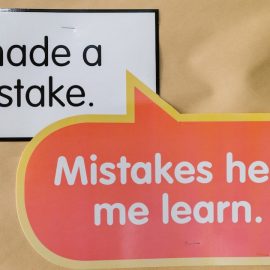

This article is an excerpt from the Shortform book guide to "Scaling People" by Claire Hughes Johnson. Shortform has the world's best summaries and analyses of books you should be reading.
Like this article? Sign up for a free trial here.
What’s Claire Hughes Johnson’s book Scaling People about? What’s the greatest resource every company has? How can you ensure you’re hiring the right people?
Fast-growing companies often focus on scaling key aspects of their business, such as their sales, marketing budgets, and manufacturing processes. However, according to Scaling People, they often forget to focus on their greatest resource: their people.
Read below for a brief Scaling People book overview.
Scaling People by Hughes Johnson
In the Scaling People book, Claire Hughes Johnson outlines the four key processes you should implement to successfully manage employees in a high-growth envirogcnment. As a former executive at Google and chief operating officer at Stripe, Hughes Johnson has years of experience managing employees that she distills into accessible tips throughout Scaling People. As a faculty member at Harvard Business School, she also has a great deal of experience teaching younger, more inexperienced managers how to implement her strategies for success.
In this article, we’ll focus on Hughes Johnson’s four key processes: uniform, company-wide structures that all growing companies need to employ to operate efficiently. These four processes aren’t the only keys to success—Hughes Johnson clarifies that you also need committed individuals who run these processes—however, they form the foundation of her approach to management:
- Process #1 involves setting the foundation for success by defining your guiding principles and solidifying your operating system.
- Process #2 involves hiring the right candidates by building a promising hiring pipeline and conducting consistent interviews.
- Process #3 involves turning these new hires into thriving teams by evaluating their strengths, creating a healthy environment, and delegating the right amount of work.
- Process #4 involves continuously coaching employees by providing informal feedback and formal reviews.
Process #1: Setting the Foundation for Long-Term Success
Hughes Johnson’s first process for managers involves setting the foundation for long-term growth, both in your company and in your employees. In this section, we’ll examine two of the key steps for building this foundation: codifying your company’s guiding principles and developing your company’s operating system (the set of norms that outline how your company functions).
Codify Your Key Principles
To ensure that your company has a clear identity to guide its business model from the beginning, Hughes Johnson recommends that you codify your company’s key principles in a set of guiding papers. She says that these guiding papers should include four components: your company’s mission, long-term targets, key values, and team charters.
Component #1: Company Mission
First, Hughes Johnson recommends drafting a mission statement—that is, a concise statement outlining why your company exists. She clarifies that such statements should be unique to your company and ambitious—unique because they lose value if other companies can repeat your mission verbatim, and ambitious because they need to propel your company’s growth over the long term. For example, a coffee company aiming to produce ethically sourced coffee at a reasonable price might have the following mission statement: “To eradicate unethical coffee sourcing practices in developing countries and provide high-quality coffee at fair prices.”
Component #2: Long-Term Targets
Because mission statements often tend to be abstract, Hughes Johnson explains that companies should also codify several concrete long-term targets that can motivate employees and orient the company’s actions. For instance, a new sports betting company might have the following long-term targets: “Earn 5% of the sports betting market share in three years; increase revenue by 20% annually for the next five years; and develop three features that differentiate our sportsbook from competitors.”
Component #3: Values
Hughes Johnson notes that while long-term targets establish your company’s aims, writing down your values establishes your company’s culture. She writes that when you choose your values, the most important consideration is that they’re authentic—otherwise, your employees will recognize that they’re contrived and derive little motivation from them. For this reason, she recommends seeking feedback from your employees about your values to ensure they’re true to your company. Apple employees, for example, might say they value creativity, ingenuity, and innovation, since Apple’s goal is to drive technological progress worldwide.
Component #4: Team Charters
Finally, to provide employees with guidance on a more fine-grained level, Hughes Johnson recommends drafting a team charter to clarify the purpose of each individual team. Such documents, she explains, provide valuable clarity to team members about their specific goals and responsibilities—unlike the mission statement, which is focused on the company’s bigger picture. In particular, she argues that team charters are essential in phases of rapid growth, since these phases often cause confusion about team members’ specific roles while the company is evolving.
Develop Your Operating System
Hughes Johnson notes that while your guiding principles lay the groundwork for your company, your operating system—the set of underlying norms that outline how your company functions—allows your company to function effectively each day. We’ll discuss three subsystems that are essential to your overall operating system: constructing strategy, ensuring accountability, and fostering communication.
Subsystem #1: Strategy
First, Hughes Johnson explains that companies need a dedicated system for determining their strategy because they’re liable to run amok without such a system. At its core, a company’s strategy involves decisions about where to allocate resources (especially people and money) by deciding which potential sources of growth deserve more or less focus.
To make these decisions, Hughes Johnson advises company leaders to reflect on their financial status and goals for the next year. Then, leaders should make projections about the potential costs and returns of different projects to decide how many employees, and how much money, to allocate to any given project. For example, if Meta expected its virtual reality platform to generate 10% of the company’s revenue, it might not be strategically prudent to allocate more than 10% of its total budget to the virtual-reality team.
Subsystem #2: Accountability
To best implement your strategic plans, Hughes Johnson points out that you need clear accountability standards that identify who’s responsible for which aspects of a project; otherwise, task assignments won’t be clear, leading to shoddy execution. For instance, if Google’s self-driving car team didn’t clearly delineate who was responsible for which aspects of the project (such as the software, the lane assist, and the steering), the team would be in disarray.
Further, to retain strong accountability throughout the course of a project, Hughes Johnson recommends that you meet with your team each week to review progress. She explains that such meetings are pivotal for keeping team members in the loop, as well as affording the team a chance to re-evaluate their approach if the project is proving unsuccessful.
Subsystem #3: Communication
Just as team meetings keep members on the same page, company-wide forms of communication keep your entire company up to date on key developments. Hughes Johnson explains that by creating clear lines of communication, you can cultivate trust from your employees because they won’t fear missing out on important information. And although she acknowledges that every company has different communicative needs, she asserts that candid, easily accessible information is essential to every organization.
Process #2: Hiring the Right People
Having seen how to lay a promising foundation to support your company’s long-term growth, the next process is to hire individuals who can propel you toward this growth. In this section, we’ll examine Hughes Johnson’s recommendations about developing a thriving recruiting pipeline to draw top talent to your company and then hiring the best candidates from that pipeline to fill your teams.
Build Your Recruiting Pipeline
The first step to hiring the right person, Hughes Johnson explains, is to build a recruiting pipeline that attracts talent to your organization. She offers an array of strategies for developing this pipeline, of which we’ll discuss three: Write transparent job descriptions, evaluate previous applicants, and use referrals.
Strategy #1: Write Transparent Job Descriptions
According to Hughes Johnson, it’s tempting to write job descriptions that attempt to win over applicants by painting a warm picture of your company. But she argues that such descriptions are often counterproductive, as they obscure the aspects of the job that allow you to attract the right applicants. She contends that job descriptions should offer a transparent picture of the role and its responsibilities. For instance, instead of highlighting how your team members are all light-hearted people who hang out together on the weekends, focus on the concrete tasks and skills required of successful applicants.
Strategy #2: Evaluate Previous Applicants
In addition to outlining the hard skills (concrete skills, like proficiency with coding languages) necessary for a role, Hughes Johnson recognizes that you also need to attract talent with the necessary soft skills (intangible skills, such as a knack for clear communication). To that end, she recommends assessing applicants whom you’ve previously hired for similar roles, focusing especially on the commonalities between applicants who became successful employees.
For example, imagine you’re hiring for a new software engineer—in this case, you should evaluate your most successful software engineers and look for similarities. If you then discover that most of these engineers are especially effective communicators with exceptional time management skills, you can add these skills to the job description to attract similar applicants.
Strategy #3: Use Referrals
Beyond evaluating the skills of successful employees, Hughes Johnson also recommends that you leverage your employees’ networks by leaning heavily on referrals. She reasons that, assuming you’ve hired strong employees in the past, these employees will likely know other similarly strong candidates they can refer. Consequently, by soliciting referrals from your current employees, you can focus on a smaller pool of applicants rather than sifting through hordes of applicants with no ties to your company.
Hire the Right Person for the Job
After you’ve created a healthy hiring pipeline, the next task is to hire the correct individuals for any open roles. According to Hughes Johnson, doing so requires two steps: a consistent interview process and a collaborative decision-making process.
Step #1: The Interview Process
Hughes Johnson explains that you should implement a straightforward and consistent assessment rubric throughout the interview process. Otherwise, you’ll have no uniform criteria against which to judge candidates, making you more susceptible to hiring someone for the wrong reasons (for example, if you found them charming). Moreover, because Hughes Johnson recommends having multiple interviewers meet with each candidate, she advises that you train these interviewers to use your standardized rubric when assessing each candidate.
Step #2: The Decision-Making Process
After the interview process, it comes time to decide which candidates to hire. For this step, Hughes Johnson recommends that you embrace a collaborative approach to decision-making, in which the hiring manager ultimately decides whether to hire a given applicant, but only does so after listening carefully to the views of the hiring committee. This approach has two benefits: First, it allows hiring managers to hear the insights of their committees, which often supplement the managers’ initial assessments. Second, because this process leaves the ultimate decision in the hiring manager’s hands, it allows them to take responsibility for the decision.
Process #3: Building and Sustaining Thriving Teams
Hughes Johnson recognizes that the work isn’t finished after you’ve hired the best candidates to round out your team. On the contrary, you must take active steps to integrate these new employees successfully into the team. In this section, we’ll examine three of the steps that Hughes Johnson recommends for building—and sustaining—effective teams: evaluating your team members, developing a healthy environment, and deciding when to delegate tasks.
Step #1: Evaluate Your Team Members
Hughes Johnson relates that the first step toward creating a thriving team involves assessing your team members to see whether they’re capable of meeting their goals. To do so, she advises that you utilize Max Landsberg’s skill-will matrix to assess team members along two dimensions: their competency for completing their tasks (skill) and their drive to do so (will).
With respect to skill, Hughes Johnson notes that there are two possibilities. First, it’s possible that a team member will have too little skill, in which case she recommends either training the team member or hiring new team members who already have the requisite skills. Second, it’s possible that a team member will have too much skill, such that their tasks will bore them because they’re insufficiently challenging. In this case, she advises that you shift your team’s goals so that they’re more demanding.
With respect to will, Hughes Johnson says there are two analogous possibilities. First, a team member might have too little will, leading them to work inefficiently. If that’s the case, she suggests that you try to reorient the team member around the team’s mission. For example, if you were managing a marketing team for a healthcare company, you could remind unmotivated team members of your mission to (say) provide affordable healthcare for low-income families. Alternatively, a team member might have too much will, which Hughes Johnson warns can lead them to set unrealistic expectations that they can’t meet. In this case, she recommends explicitly setting expectations so that team members aren’t setting themselves up for failure.
Step #2: Decide When to Delegate Tasks
Hughes Johnson contends that, after you’ve assessed your team members’ competencies and motivation, the next step is to start delegating assignments centered around your team’s goals.
For context, she explains that managers who delegate tasks too frequently or too infrequently risk harming the teams they’ve built. On the one hand, when managers delegate tasks all the time, they often overwork their teams and place too much responsibility in employees’ hands too quickly. On the other, managers who never delegate tasks run the risk of taking on too much work and leaving their team members insufficiently challenged.
To strike the perfect balance, Hughes Johnson suggests that you evaluate every task along two dimensions—its consequences and its reversibility—and only handle tasks that you can’t afford to mess up (those with serious, irreversible consequences). For example, if wealthy investors ask for a presentation on your company to decide whether to invest, the presentation itself would have crucial ramifications with no opportunity for a do-over. In such cases, the stakes are high enough that you should perform the task yourself. But, according to Hughes Johnson, you should delegate all other types of tasks to your team, because such tasks are good learning opportunities for them and also because delegating them affords you more time to focus on higher-stakes tasks.
Step #3: Develop a Healthy Team Environment
After you’ve started delegating work to your team members to tackle key projects, Hughes Johnson’s final step is to continuously develop a healthy team environment that establishes a safe culture of open expression and trust. According to Hughes Johnson, there are two primary modes of establishing this environment: offsites, which are multiple-day events that take place outside of the office, and regular meetings.
Process #4: Mentor Your Employees
Hughes Johnson recognizes that management’s work doesn’t end upon the formation of a thriving team. On the contrary, she holds that managers should continue to develop the skills of their employees through active instruction. In this section, we’ll discuss her informal approach to helping employees through inquisitive coaching and her formal approach of using official performance reviews.
Approach #1: Inquisitive Coaching
Hughes Johnson relates that one approach that has proven effective for her is hypothesis-based coaching—which we’ll call inquisitive coaching—in which you informally share your observations of your employees to guide them to better performance. Inquisitive coaching has three steps: First, observe your employees carefully; second, identify any persistent shortcomings; and third, share these findings tactfully with your employees.
Step #1: Observe Your Employees
Before you attempt to provide any feedback, Hughes Johnson advises you to carefully observe your employees’ performance in various situations. She explains that, because different strengths and weaknesses will emerge in different circumstances, waiting until you’ve seen your employees across these circumstances can provide you with a fuller picture of their tendencies.
Step #2: Identify Shortcomings
Hughes Johnson writes that after enough time spent in observation, you’ll be able to identify consistent shortcomings that afflict individual team members, as well as certain strengths. For example, you might find that one of your team members excels whenever they work on projects without strict deadlines but tends to become inefficient whenever you impose a deadline. Further, Hughes Johnson explains that the longer you look for patterns among your team members, the more effective you’ll become at identifying them.
Step #3: Share Your Thoughts
After you’ve identified possible shortcomings that hinder your employees, Hughes Johnson recommends that you share your observations with them so they can continue to grow. However, she clarifies that you must be tactful to do so: You shouldn’t frame your observations as a judgment about them as a person, but rather about their behavior and its effect on their performance. For instance, rather than telling someone “I’ve noticed that you consistently underperform when you’re under time pressure,” try saying, “I’ve noticed that time pressure can make it difficult for you to finish projects on time.” By focusing on an external circumstance rather than an internal failing, you remove any semblance of blame from your observation.
Additionally, Hughes Johnson advises you to work together with your team members to investigate problems, rather than telling them what to do. She explains that when you order someone on your team to address a personal shortcoming, they’re often put on the defensive and become reluctant to help. By contrast, when you position yourself as a mutual investigator of the problem, you become a collaborator, making your team members more receptive to your thoughts and suggestions. For example, instead of simply telling a team member who struggles with time pressure to implement a daily schedule, you could instead ask, “What measures do you think you should implement to address the time pressure?”
Approach #2: Formal Reviews
While Hughes Johnson’s intuitive approach to coaching is an informal process that occurs throughout the year, she also points out that managers should implement formal reviews that occur on a consistent basis. Such reviews have three parts: gathering feedback from various sources, adjusting that feedback to account for irregularities, and determining any changes to compensation.
Part #1: Gather Feedback
First, Hughes Johnson writes that you should collect feedback about your employees from three sources: the employees themselves, their co-workers, and yourself.
To begin, ask each reviewee to submit a brief self-assessment that summarizes their accomplishments, highlights their strengths, and discusses one potential area of improvement. Because your employees are often most aware of their own work, their reports could provide insights that you’ve missed.
Next, choose a handful of each reviewee’s co-workers who are especially familiar with the reviewee’s work to give feedback on their performance. Whereas the reviewee might be motivated by self-interest, their co-workers should be able to give more candid assessments.
Finally, after you’ve taken each reviewee’s self-assessment and peer assessments into consideration, write down your own feedback report, discussing the reviewee’s accomplishments, strengths, and weaknesses. In particular, Hughes Johnson suggests rating employees on a concrete five-point scale, from “does not meet expectations” to “greatly exceeds expectations,” which will inform your later decision on whether to promote.
Part #2: Adjust Feedback
Hughes Johnson recognizes that biases and other suboptimal circumstances can influence performance reviews. For example, you might find that women consistently receive worse evaluations than men, or that one manager consistently rates employees lower than other managers. For this reason, you should use data analysis to track performance ratings from different managers and across different demographic groups.
She points out that by analyzing performance ratings, you can identify any abnormalities in the review process and dig deeper into them. For instance, if you notice that one manager provides significantly higher ratings than other managers, you could carefully re-evaluate the employees to see whether they’re actually performing better than those on other teams, or whether the manager is being too generous.
Part #3: Determine Changes to Compensation
Finally, after you’ve gathered and adjusted your feedback, it’s time to rely on your compensation philosophy to determine whether to give your employee a raise. Your compensation philosophy, Hughes Johnson explains, is your guiding framework for determining how much compensation any given employee should receive. And although she doesn’t offer concrete advice for establishing a compensation philosophy, she suggests that incorporating some component of merit—such that higher performance is met with higher compensation—is a prudent way to continue to motivate your employees.

———End of Preview———
Like what you just read? Read the rest of the world's best book summary and analysis of Claire Hughes Johnson's "Scaling People" at Shortform.
Here's what you'll find in our full Scaling People summary:
- How to successfully manage employees in a high-growth environment
- The four components that your company's mission should include
- Why you should have a formal review process for your employees






